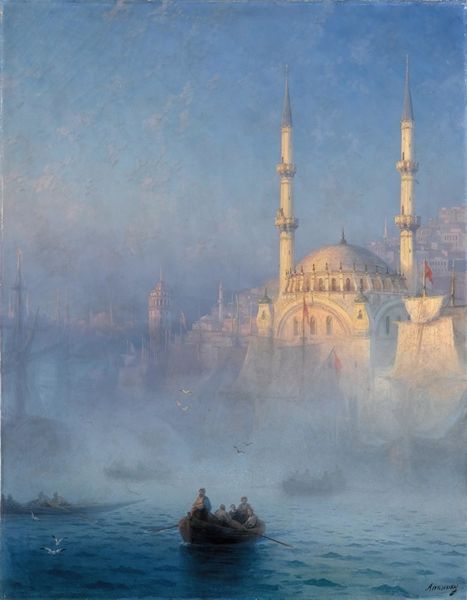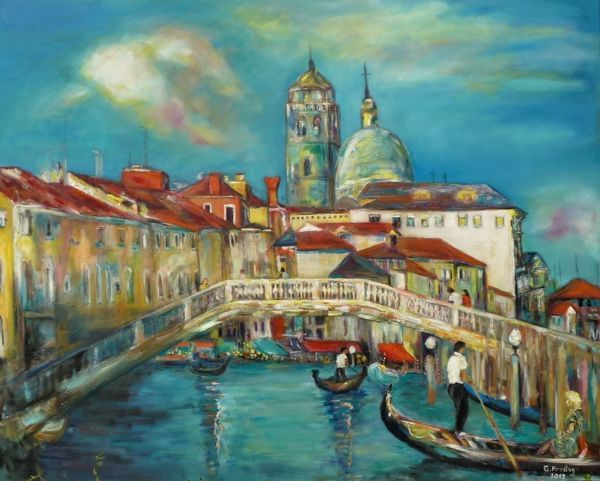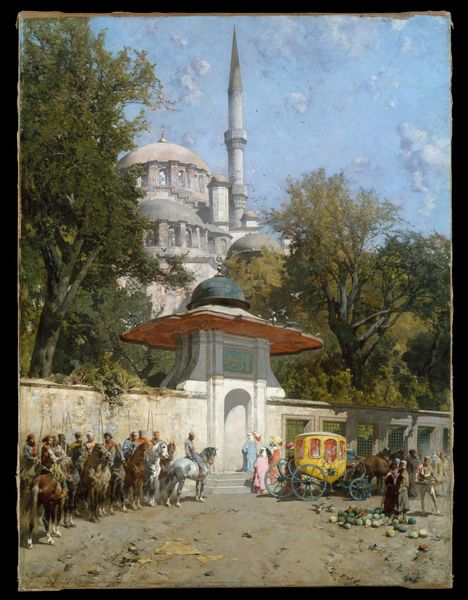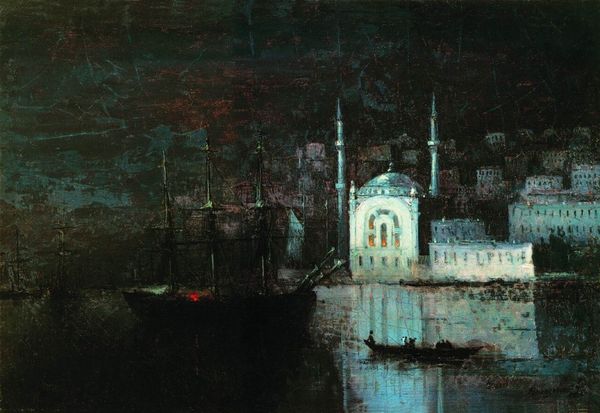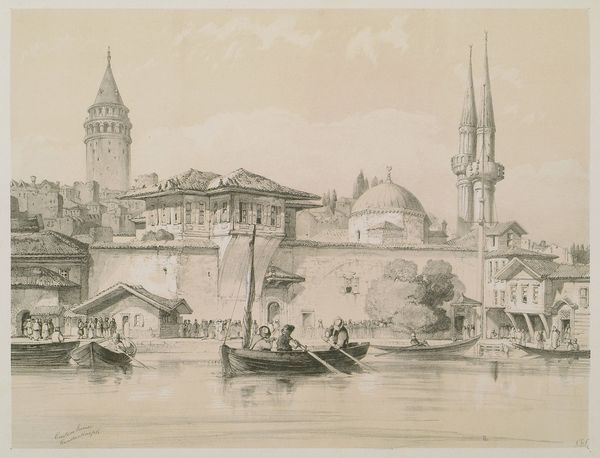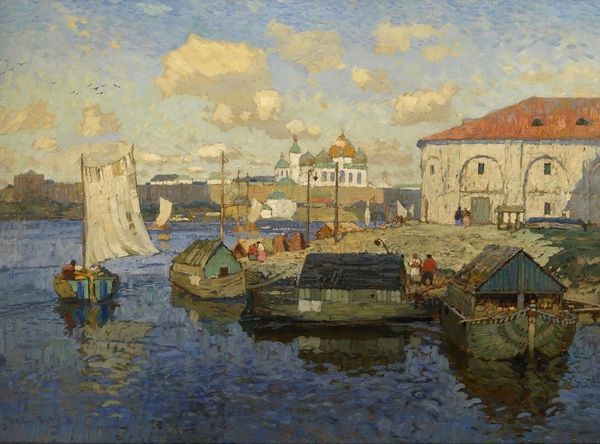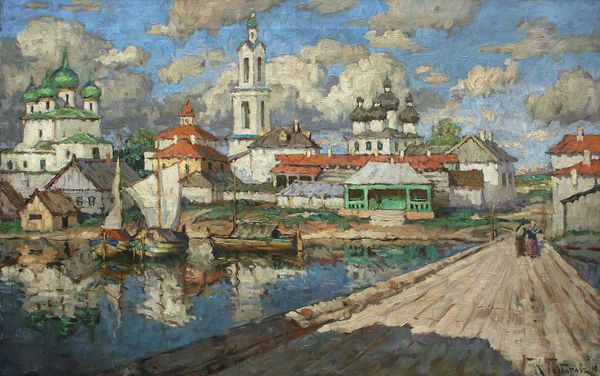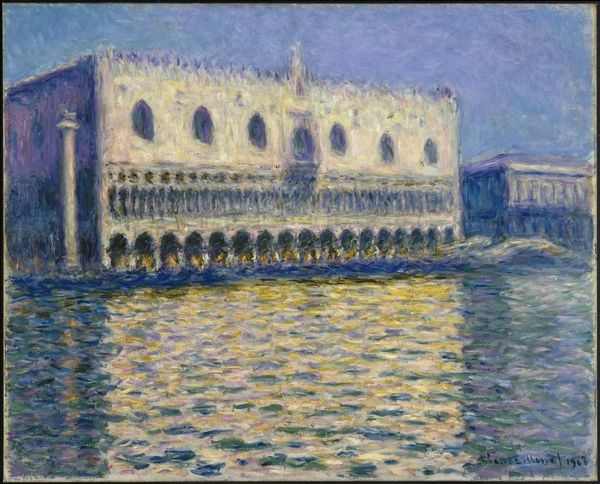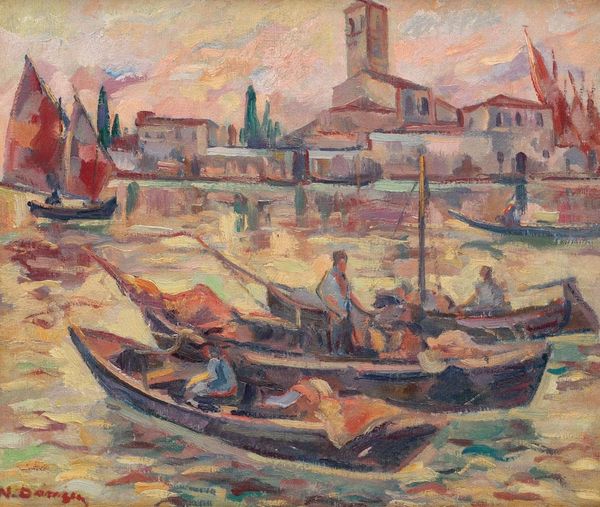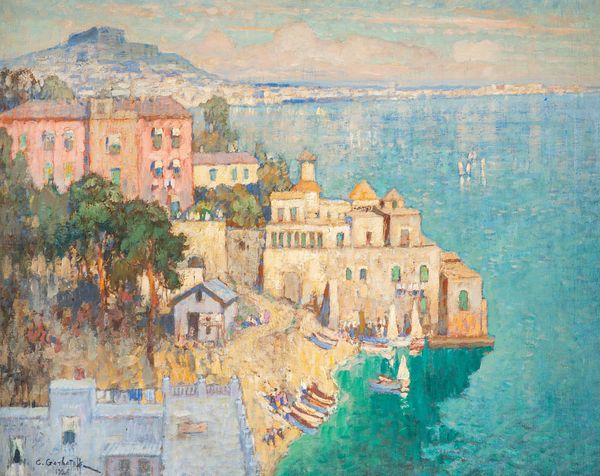
painting, oil-paint
#
baroque
#
painting
#
impressionism
#
oil-paint
#
landscape
#
impressionist landscape
#
oil painting
#
orientalism
#
cityscape
Copyright: Public domain
Editor: This is Ibrahim Calli's painting, "Uskudar," an oil on canvas rendering of a bustling waterside city. The palette feels muted, dreamlike. It’s a captivating blend of architecture and human activity, but what strikes me most is how… nostalgic it feels, even though I’ve never been there. What do you see in this piece? Curator: Beyond the depiction of Uskudar, a historic district in Istanbul, I see a careful negotiation of cultural identity through visual language. Look at the domes and minarets. They’re not just architectural elements; they’re signifiers of a particular history and spiritual presence. Calli uses these recognizable symbols to evoke a sense of place, but it goes deeper than just geography. Notice how people are rendered – the attire, the gatherings. Editor: It almost feels like a scene frozen in time. Is that a deliberate choice? Curator: Precisely. The Orientalist movement often portrayed the ‘East’ as timeless, untouched by Western modernity, though painted here by a local artist. Do you see any Western elements bleeding into the scene, or is it presented as wholly ‘other’? That very contrast becomes the meaning of the image. The brushstrokes lean towards impressionism, so this frozen moment vibrates with a vibrant presence, adding complexity. Editor: So the painting becomes more about the *idea* of Uskudar, and less about documentary accuracy? Curator: Absolutely. Consider the emotional weight that architectural and cultural symbols carry – not just for the artist but also for the viewer, both then and now. These buildings stand in not only for places, but also for ways of life. What lasting meaning and value might Calli be exploring? Editor: I see it now! It is a visual poem laden with signifiers, blending styles to express cultural memory. Thank you! Curator: Indeed, a dance between observation and symbolic representation – always present and powerful.
Comments
No comments
Be the first to comment and join the conversation on the ultimate creative platform.
